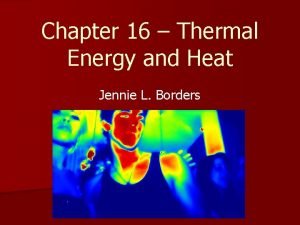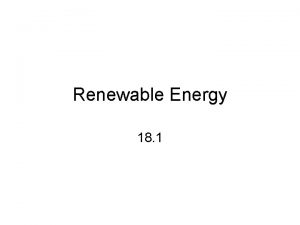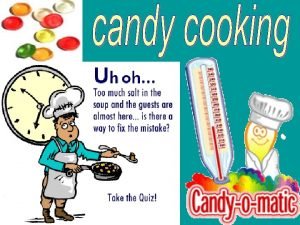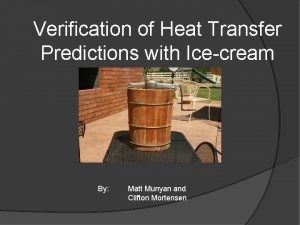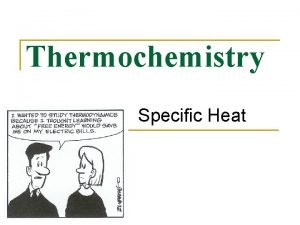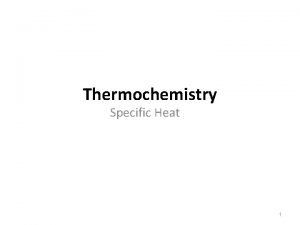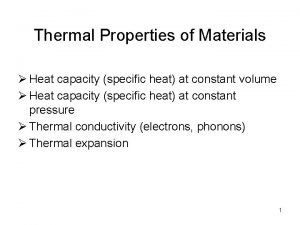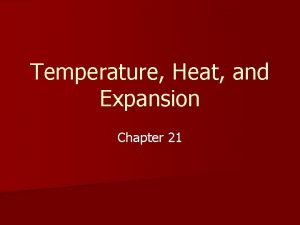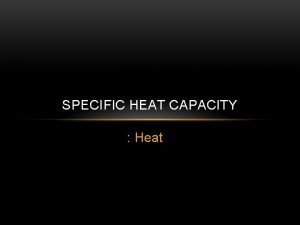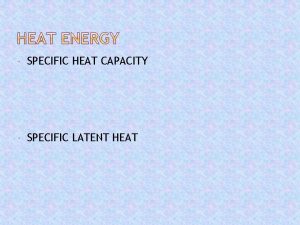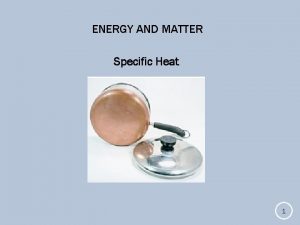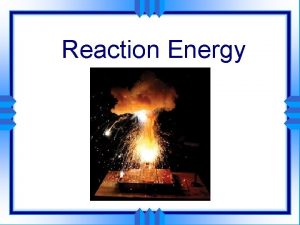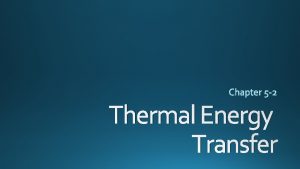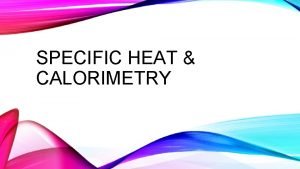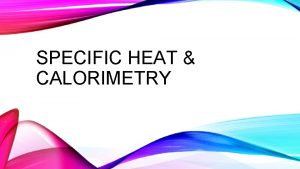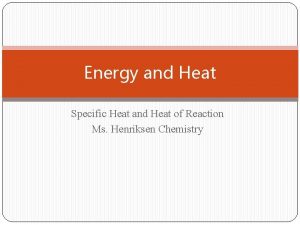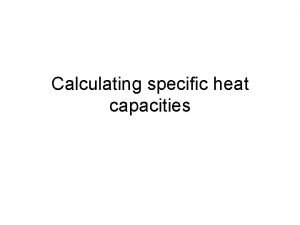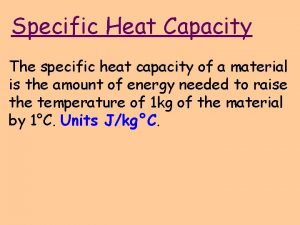SPECIFIC HEAT Chapter Six HEAT AS ENERGY SPECIFIC


















- Slides: 18

SPECIFIC HEAT Chapter Six HEAT AS ENERGY

SPECIFIC HEAT • Adding energy to a material causes the temperature to go up. • Taking energy away from a substance causes the temperature to go down!

SPECIFIC HEAT • Have you ever noticed that on a hot summer day the pool is cooler than the hot cement? • OR maybe that the ocean is cooler than the hot sand? Why? • The sun has been beating down on both of them for the same amount of time. . . • It takes more thermal energy to raise the temperature of water that it does the cement!

SPECIFIC HEAT • Water absorbs a lot of heat energy before its temperature changes while sand needs little heat energy before its temperature increases.



SPECIFIC HEAT • Specific Heat is the amount of energy that is required to raise the temperature of 1 kg of a material (substance) by one degrees Celsius. • It takes different amounts of energy to make the same temperature change in different substances. • UNIT: J/g °C or J/kg K • SYMBOL: Cp


SPECIFIC HEAT: WATER • The Cp is high because H 2 O molecules form strong bonds with each other – this is called hydrogen bonding. • It takes a lot of energy to break the bonds so that the molecules can then start to move around faster (HEAT UP).

EXAMPLE: SPECIFIC HEAT OF WATER • Cp = 4, 184 Joules of energy to raise the temperature of 1 kg 1°C. Why Cp? Cp Stands for “Heat Capacity”

CALCULATING CHANGES IN THERMAL ENERGY Q = mΔTCp HEAT MASS SPECIFIC HEAT CHANGE IN TEMPERATURE

PRACTICE: The temperature of a 32 g silver spoon increases from 20°C to 60°C. If silver has a specific heat of 235 J/kg K. what is the change in thermal energy (heat) of the spoon? Mass = 32 g Cp = 235 J/kg K ΔT = 60°C - 20°C = 40°C Q=?


A copper ornament has a mass of 0. 0693 kg and changes from a temperature of 20. 0°C to 27. 4ºC. How much heat energy did it gain? A. 200 J C. 540 J B. 460 J D. 740 J

USING HEAT – HEAT ENGINES The two main types of heat engines are External Combustion and Internal Combustion External = power plants Internal = car engine

USING HEAT – EXTERNAL COMBUSTION External combustion – produces electricity at power plants. Water is heated by a fuel and the pressurized steam spins a turbine.

USING HEAT – EXTERNAL COMBUSTION HEAT ENGINES External combustion – nuclear power plants.

USING HEAT – INTERNAL COMBUSTION Internal combustion – car engines. The fuel (gas) is compressed and ignited (lit) to drive a piston.
 Specific heat capacity table pdf
Specific heat capacity table pdf Specific latent heat definition
Specific latent heat definition Thermal energy vs heat energy
Thermal energy vs heat energy Energy energy transfer and general energy analysis
Energy energy transfer and general energy analysis Energy energy transfer and general energy analysis
Energy energy transfer and general energy analysis Classify each polygon
Classify each polygon Chapter 16 thermal energy and heat
Chapter 16 thermal energy and heat Chapter 7 energy conservation of energy
Chapter 7 energy conservation of energy Specific gravity to specific volume
Specific gravity to specific volume Specific gravity to specific volume
Specific gravity to specific volume Operation of three heat stove switch
Operation of three heat stove switch Six forms of renewable energy
Six forms of renewable energy Unit for specific heat capacity
Unit for specific heat capacity Specific heat capacity of sugar
Specific heat capacity of sugar Specific heat capacity of ice cream
Specific heat capacity of ice cream Formula for heat capacity
Formula for heat capacity Homemade calorimeter
Homemade calorimeter Lattice heat capacity ppt
Lattice heat capacity ppt Chapter 21 temperature heat and expansion answer key
Chapter 21 temperature heat and expansion answer key






